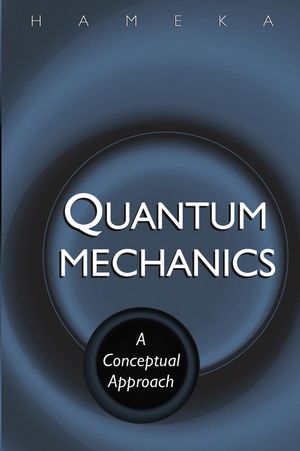Quantum Mechanics: A Conceptual ApproachISBN: 978-0-471-64965-6
Paperback
208 pages
March 2004
 This is a Print-on-Demand title. It will be printed specifically to fill your order. Please allow an additional 10-15 days delivery time. The book is not returnable.
|
||||||
1. The Discovery of Quantum Mechanics.
I Introduction.
II Planck and Quantization.
III Bohr and the Hydrogen Atom.
IV Matrix Mechanics.
V The Uncertainty Relations.
VI Wave Mechanics.
VII The Final Touches of Quantum Mechanics.
VIII Concluding Remarks.
2. The Mathematics of Quantum Mechanics.
I Introduction.
II Differential Equations.
III Kummer’s Function.
IV Matrices.
V Permutations.
VI Determinants.
VII Properties of Determinants.
VIII Linear Equations and Eigenvalues.
IX Problems.
3. Classical Mechanics.
I Introduction.
II Vectors and Vector Fields.
III Hamiltonian Mechanics.
IV The Classical Harmonic Oscillator.
V Angular Momentum.
VI Polar Coordinates.
VII Problems.
4. Wave Mechanics of a Free Particle.
I Introduction.
II The Mathematics of Plane Waves.
III The Schrödinger Equation of a Free Particle.
IV The Interpretation of the Wave Function.
V Wave Packets.
VI Concluding Remarks.
VII Problems.
5. The Schrödinger Equation.
I Introduction.
II Operators.
III The Particle in a Box.
IV Concluding Remarks.
V Problems.
6. Applications.
I Introduction.
II A Particle in a Finite Box.
III Tunneling.
IV The Harmonic Oscillator.
V Problems.
7. Angular Momentum.
I Introduction.
II Commuting Operators.
III Commutation Relations of the Angular Momentum.
IV The Rigid Rotor.
V Eigenfunctions of the Angular Momentum.
VI Concluding Remarks.
VII Problems.
8. The Hydrogen Atom.
I Introduction.
II Solving the Schrödinger Equation.
III Deriving the Energy Eigenvalues.
IV The Behavior of the Eigenfunctions.
V Problems.
9. Approximate Methods.
I Introduction.
II The Variational Principle.
III Applications of the Variational Principle.
IV Perturbation Theory for a Nondegenerate State.
V The Stark Effect of the Hydrogen Atom.
VI Perturbation Theory for Degenerate States.
VII Concluding Remarks.
VIII Problems.
10. The Helium Atom.
I Introduction.
II Experimental Developments.
III Pauli’s Exclusion Principle.
IV The Discovery of the Electron Spin.
V The Mathematical Description of the Electron Spin.
VI The Exclusion Principle Revisited.
VII Two-Electron Systems.
VIII The Helium Atom.
IX The Helium Atom Orbitals.
X Concluding Remarks.
XI Problems.
11 Atomic Structure.
I Introduction.
II Atomic and Molecular Wave Function.
III The Hartree-Fock Method.
IV Slater Orbitals.
V Multiplet Theory.
VI Concluding Remarks.
VII Problems.
12 Molecular Structure.
I Introduction.
II The Born-Oppenheimer Approximation.
III Nuclear Motion of Diatomic Molecules.
IV The Hydrogen Molecular Ion.
V The Hydrogen Molecule.
VI The Chemical Bond.
VII The Structures of Some Simple Polyatomic Molecules.
VIII The Hückel Molecular Orbital Method.
IX Problems.
Index.



